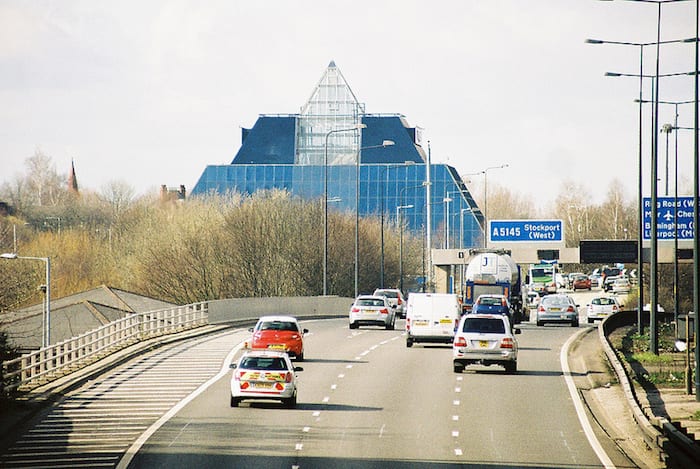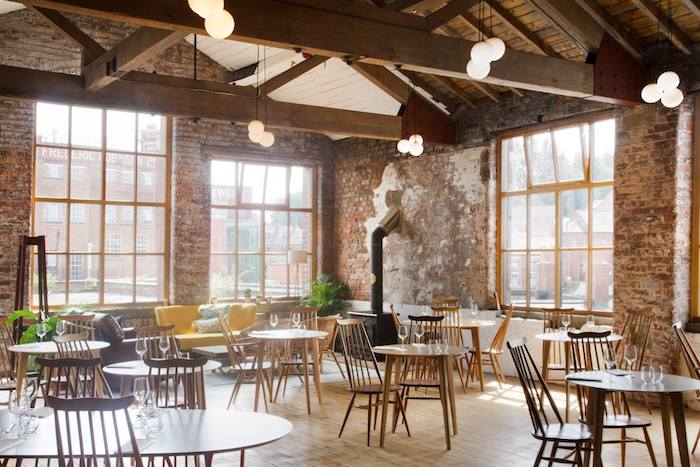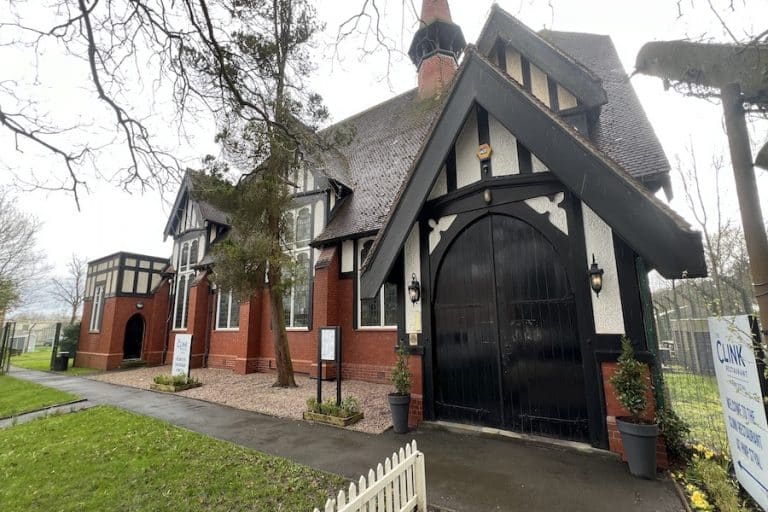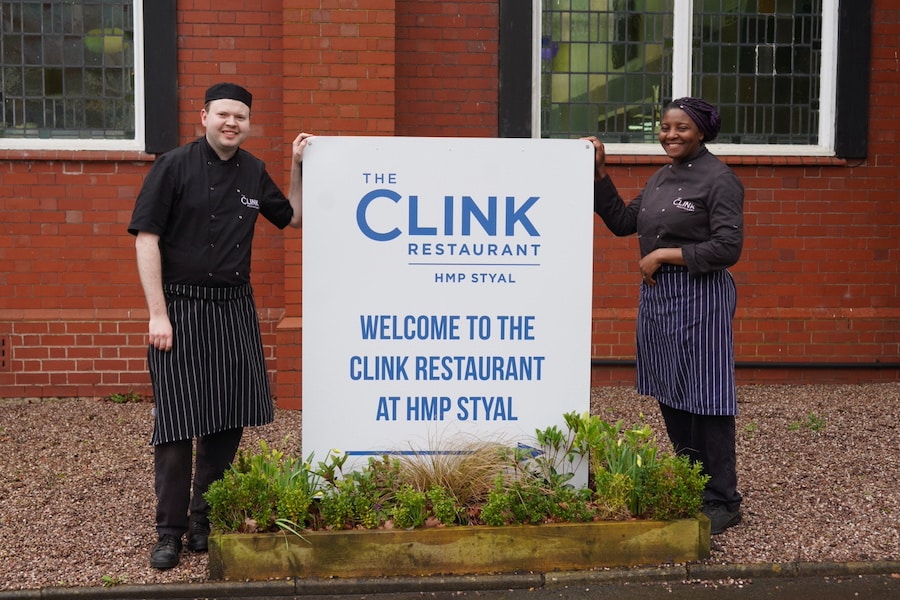Let’s move to Stockport, Greater Manchester. Or maybe not…
- Written by Ray King
- Last updated 7 years ago
- Sport, Stockport

A lot of water has flowed down the River Mersey under that towering railway viaduct since Stockport County beat Manchester City 3-1 in a First Division match at Edgeley Park in 1997.
For a start, Manchester City are now premiership champions whilst the Hatters have sunk to the depths of the National League North.
But it’s not all been downhill for Stockport. The Guardian‘s Lifestyle section recently ran a feature article by Tom Dyckhoff headlined Let’s move to Stockport, Greater Manchester, a sweet and sour view of a town “arriving fashionably late to the regeneration party.”
It contrasts “staggering deprivation” with “swathes of wealth in Victorian suburbs”, which is a bit of an oversimplification – where doesn’t have similar divisions? – in a rather superficial piece about a place that’s home to almost 300,000 residents, 10,000 businesses and a history dating back 800 years.
Dyckhoff did, apparently, deign to get off the train and have a look round, having passed through countless times and gazing down from the Pendolino (coming up from London perhaps?) on the viaduct at “its odd dramatic landscape”.
The deep Mersey valley, the pyramid, the Merseyway shopping centre and mill chimneys, “all chucked together like a petulant child. Interesting. Must explore. And then, one day, I did.”
One day? Couple of hours maybe? Pretty authoritative article, then.

Our visitor reveals the blindingly obvious – that Stockport is very well connected by rail and motorway (which you don’t have to get off the train to see) and is close to Manchester Airport.
There are also some exceptionally fine and fairly well-priced (by London standards) late-Victorian and Edwardian homes. “The avenues of Bramhall are lined with huge piles,” we’re told, and “closer in, Davenport has wonderful Victorian villas.” The Heatons get the nod too, though Hazel Grove is a bit “suburban”.
Cheadle Hulme, where I’ve lived for nearly 40 years between two great pubs, the Church Inn and the Hesketh Tavern, doesn’t get a mention. I’m not miffed. There are probably enough Guardian readers around here already.
The late Brian Redhead, who lived down the avenue from me, used to be the paper’s northern editor, though Peter Stringfellow, who lived across the road in his Millionaire Club days, is probably more of a Sun man.
The article’s case against Stockport reads thus: “Do not underestimate the scale of revival necessary. I hope it doesn’t ape Manchester’s bling economy too closely. Much of the centre is a swirl of infrastructure: learn to love flyovers.” How kind.
I think Stockport town centre has much potential. The trouble is that not enough people from those “swathes of wealth” go there. It’s too easy to get on a train in Bramhall, Cheadle Hulme, Hazel Grove, Davenport or Heaton Chapel and stay on it to Manchester Piccadilly and hop a Metroshuttle.
But then the same could be said about Altrincham before the market was regenerated, the impact of which rippled across town. Stockport is in line for a dose of similar medicine. Its Market Hall is undoubtedly one of the area’s most striking architectural features and gives it a unique beauty. The recently restored “Glass Umbrella” covered Market Hall dominates the area and dates from the 1860s.
The area has been important since at least 1260 and visitors can discover traces of the market place’s significance in the impressive splendour of St Mary’s Church, a landmark from miles around. Or they can discover Stockport’s oldest dwelling, Staircase House, which offers the opportunity to travel from 1460-1940 through sixteen accessible room sets.
Can Steve Pilling, a key player in the revival of Mr Thomas’s and Sam’s Chophouses in Manchester, deliver for Stockport what developer Nick Johnson did in Altrincham (and at the Mackie Mayor) as part of the planned £7 million transformation of the Market Place and Underbanks area?
His appointment as preferred operator for the historic Produce Hall last November was a controversial one, since the team behind Stockport’s successful Foodie Friday street market were among the unsuccessful bidders.
In addressing that “staggering deprivation”, as the Guardian puts it, the transformation cannot come soon enough.
- This article was last updated 7 years ago.
- It was first published on 25 April 2018 and is subject to be updated from time to time. Please refresh or return to see the latest version.
Did we miss something? Let us know: press@ilovemanchester.com
Want to be the first to receive all the latest news stories, what’s on and events from the heart of Manchester? Sign up here.
Manchester is a successful city, but many people suffer. I Love Manchester helps raise awareness and funds to help improve the lives and prospects of people across Greater Manchester – and we can’t do it without your help. So please support us with what you can so we can continue to spread the love. Thank you in advance!
An email you’ll love. Subscribe to our newsletter to get the latest news stories delivered direct to your inbox.
Got a story worth sharing?
What’s the story? We are all ears when it comes to positive news and inspiring stories. You can send story ideas to press@ilovemanchester.com
While we can’t guarantee to publish everything, we will always consider any enquiry or idea that promotes:
- Independent new openings
- Human interest
- Not-for-profit organisations
- Community Interest Companies (CiCs) and projects
- Charities and charitable initiatives
- Affordability and offers saving people over 20%
For anything else, don’t hesitate to get in touch with us about advertorials (from £350+VAT) and advertising opportunities: advertise@ilovemanchester.com

Head down the rabbit hole for Adventures in Wonderland with Z-arts

Major rail investment set to transform Manchester-Leeds commutes

“His presence will be deeply missed” Children’s hospice bids farewell to their visionary CEO

Has Gordon Ramsay created Manchester’s ultimate bottomless brunch?

The Clink celebrates ten years of empowerment and second chances

















